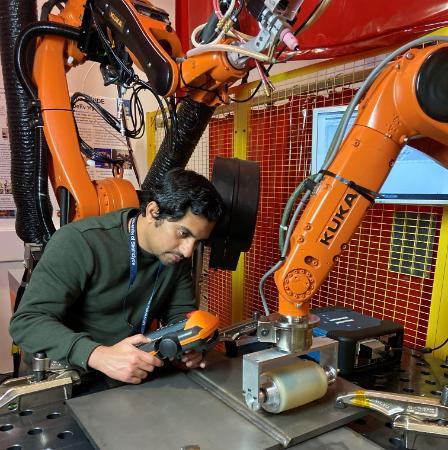A new, University of Strathclyde developed technology to identify weld defects in minutes will save time and cost in high-integrity fabrications for nuclear new build projects and other quality-critical applications.
The technology was developed by the AWESIM (Automated Welding Equipment System Inspection and Monitoring) consortium, led by Cavendish Nuclear Ltd and which involved the Advanced Nuclear Research Centre at the University of Strathclyde.
The consortium, which has filed patents on the technology, also included Doosan Babcock Ltd, the Nuclear Advanced Manufacturing Research Centre at University of Sheffield, Peak NDT Ltd, Babcock International Group and Frazer Nash Ltd.

Game-changer
The AWESIM disruptive technology is a game-changer for fusion welding as it enables real time detection of defects in fusion welding processes as they occur. It will yield greater schedule certainty, take hours out of the process, help to significantly reduce the incidence of abortive welds, drive productivity up and ensure sustainability is optimised by reducing the energy and materials used in the weld.
As part of its primary function, AWESIM gathers high resolution data from several different sensors being used to interrogate the fusion welding process n real time and uses computer algorithms to rapidly analyse the data. This process gives operators an immediate indication of the presence or absence of welding defects. The sensors include acoustic, laser profiling, cameras and temperature compensated phased array ultrasound.